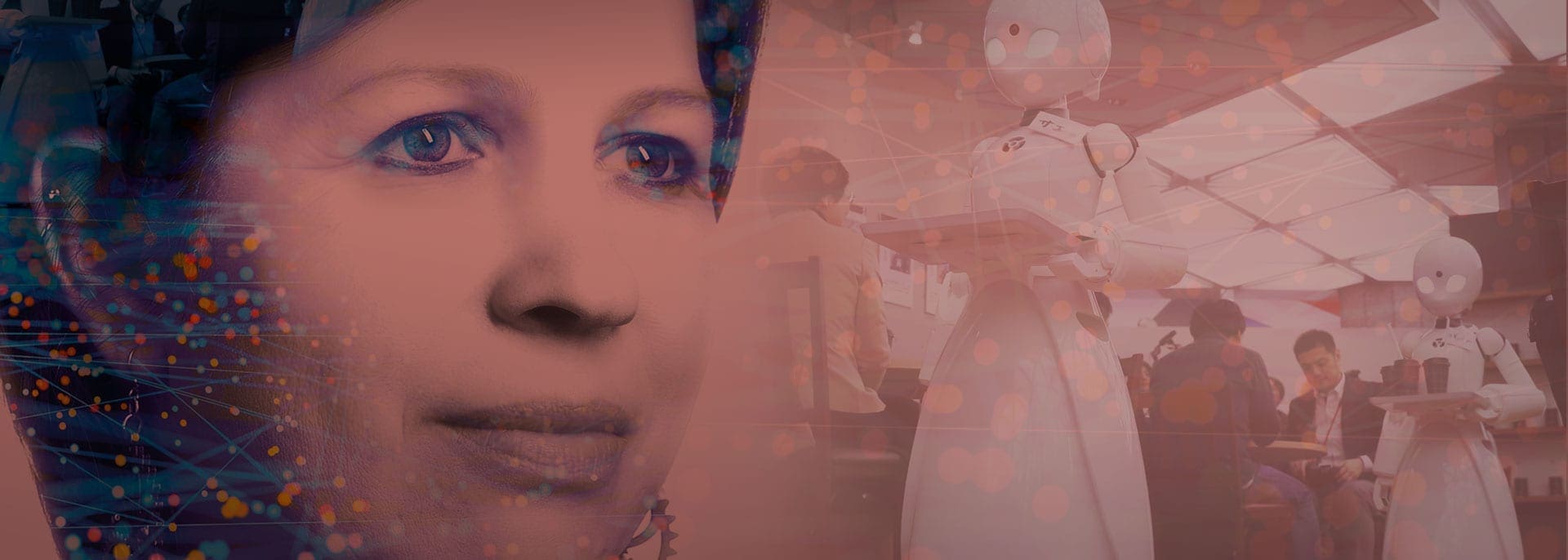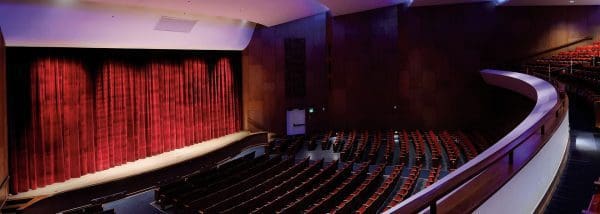Following Robots in Japan
In a Japanese café, no one bats an eye when the server happens to be a robot—though the same scene in the U.S. would cause quite a stir.
Why the discrepancy? Yulia Frumer, who has spent years in Japan researching the development of science and technology, says it comes down to psychology; that differences in demographics, political priorities, and even—or maybe especially—the movies we watch influence both how we make technology and our reactions to it. Assistant professor in the Department of History of Science and Technology, Frumer is interested in the role human psychology plays in technology, so she explores the factors behind those cultural differences by studying how Japanese roboticists make decisions about design and function, and what influences their choices. What leads someone to make a robot appear humanoid versus machine-like, for example, or prioritize intelligence over emotions?

“In Japan, humanoid robots are very big,” says Frumer, who holds the Bo Jung and Soon Young Kim Professorship of East Asian Science. “It’s a highly developed technological country excited about robots. In the American discourse about AI [artificial intelligence], talk of robots is full of fear; ‘they’re coming to get us or take over the world, be our overlords.’ So the question is, what’s the source of the difference?”
Frumer’s quest—her “lab”—requires going to the source as frequently as possible, poring over research notes, letters, and photos in Japan, and interviewing Japanese roboticists, to trace how trends began and what caused them to evolve.
“As a historian, I’m interested in the process, not the final result, so mistakes or failures are interesting because they’re very revealing of the process,” she says. But the practice of archiving papers is less popular in Japan than the U.S., and many labs and papers were destroyed by the Great Kantō earthquake of 1923 or the fires caused by American air raids during World War II, leaving Frumer to try to reconstruct those processes through interviews and memories: “We know this person studied under that professor who espoused this theory, so we can surmise these ideas came from that framework.” Frumer also considers roboticists’ training outside of the field of engineering, their engagement with science fiction and animation, their views on Eastern and Western philosophy, and their perceived mission as educators.
What Frumer wants to show, and wants her students to appreciate, is that there is never just one obvious way of designing technology or software algorithms, so it’s important to become aware of biases that may drive us to subconsciously favor certain genders, races, cultures, or abilities—like all-male crash test dummies or voice recognition software that doesn’t recognize accented English.
“By talking about the history of how these things came to be, we want our students to learn to ask questions about things that seem to be a given but are actually a choice,” she says.
Unearthing Artifacts in West Asia
Archaeologist Glenn Schwartz studies the world’s earliest known cities—specifically those in west Asia dating back to the second and third millennia B.C.—not just for their own sake, but for what they can tell us about modern societies.
“The emergence of urban societies represents a new type of society dramatically different from what came before, and pretty much set the scene for the rest of human history,” says Schwartz, Whiting Professor of Archaeology in the Department of Near Eastern Studies. “This is not studying arcane, weird people from long ago. This is learning about us.”

Archaeologists are best known for their digs, where they unearth ancient sites and artifacts. Schwartz’s “lab” is partly located in Iraqi Kurdistan, where he’s literally digging into a second-millennium town to find out how it recovered after being almost wiped out by a much earlier crisis. But it also consists of the meticulous analysis that happens after he brings his data back to Gilman Hall and sifts through it to piece together what the culture looked like—from the type of economy the city enjoyed, to what people ate and the work they did, to how the elite maintained their power.
And, since excavating a site essentially destroys all its evidence, he must painstakingly publish not only the highlights of each dig, but an exhaustive record of every detail in case future researchers need it. “The digging is just the way of collecting your data,” says Schwartz. “It’s what you do with it, the ideas you have and the new ways to study the past, that really power the field.”
The field laboratories of archaeologists are also subject to social and political tides. Schwartz was in the midst of a dig in Syria when the political situation destabilized and prompted his 2013 move to Kurdistan, which had only recently opened its borders to foreign research and the economic benefits that come with it.
Out in the field, the tools of an archaeologist are increasingly less about shovels and whisk brooms, and more about high-tech practices like remote sensing and magnetometry to pick up clues from beneath the soil. And it’s not all technology: Researchers must also photograph and draw the objects they extract. “It lets you dabble in artistic realms,” Schwartz says.
Archaeologists also have to raise funds, organize teams that include local workers, set up the team’s living accommodations, and jump through the hoops of requesting permission from local governments and following their regulations. And while many scholarly fields are just coming around to the idea of interdisciplinary collaboration, Schwartz says archaeology has always depended on it: Zoologists help to analyze animal bones, for example, while metal jewelry might require art historians to analyze style and chemists to determine the metal’s source.
“Archaeology is perhaps unusual in that it’s based in the humanities, but it also is very connected to the social and natural sciences,” he says.
Combing the City Archives
Every week, two students—one graduate and one undergraduate—spend the afternoon at the Baltimore City Archives, a red brick warehouse just southeast of the Homewood campus. Under the guidance of historian Lawrence Jackson, they piece together the life and environs of premier jazz singer Billie Holiday one Sanborn map sheet and police ledger at a time.
Archival research—a historian’s “lab”—may not be glamorous much of the time, but it is the only way to fill in the facts about the daily existence of people from the past, says Jackson, Bloomberg Distinguished Professor of English and History. It’s how we learn with whom people like Holiday spent time, precisely which routes she might have taken to the theater or to school; the details that cast someone as an individual and not just an idealized historical figure. Otherwise, it’s too easy to fall into long-standing misinterpretations of the past that leave out information contradictory to the status quo, Jackson says.
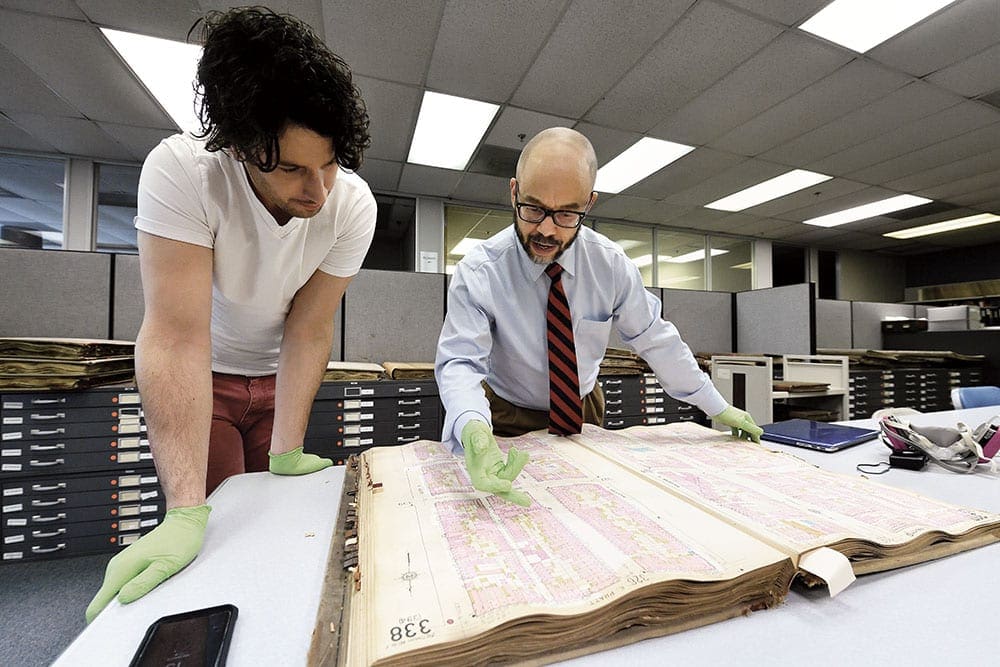
“I find those kinds of omissions quite characteristic of a lot of work on black life. That’s why, for me, primary sources have been the center of my work,” Jackson says. “I’m interested in tantalizing recovery, and the possibility of a particular kind of recapture, and bringing the past alive. The more effectively we can recapture dimensions of the past experience—it is the only source of wisdom that we have to make contemporary decisions.”
The city archives research is one piece of a larger undertaking for Jackson, who is spearheading Hopkins’ Billie Holiday Project. “It will have the richest and most detailed account of Holiday’s years in Baltimore” when complete, he says, bringing to light all aspects of her life and family and not just those generally held to be true. Several years ago, for example, a graduate student uncovered a never-before referenced newspaper account of Holiday’s sexual violation at age 11, and the class quickly produced census evidence about her family that was completely unknown.
In another course, Jackson and his students use city directories, newspaper stories, and abolitionists’ pamphlets to create online maps describing the movements of Frederick Douglass. By tracing the abolitionist’s steps, they showed that Douglass began forming his ideas about the world—which would later appear in his books and other writings—through exchanges with his enslaved and free black neighbors, not exclusively the white elites he subsequently mingled with, as is commonly believed.
In his own research, Jackson relies on the same primary sources and skills needed to comb through them that he teaches his students.
Several years ago, while researching My Father’s Name: A Black Virginia Family After the Civil War, the 2012 book he wrote about his father’s family enslaved in Virginia, he came across a census record of a woman remarkable enough that the mid-19th century census taker felt compelled to describe her as “insane by grief.”
“That moment has made me fond of serendipity,” Jackson says. “I’m conscious of the fact that even with these fairly sanitized forms of information collection, that anomalies do exist, and it renewed my own vigor toward primary sources.”
The Laboratory of Debate
In a discipline where it’s considered a compliment when a colleague takes issue with your conclusion or suggests you have more work to do, the philosophy research lab is not so much a place as it is the act of discussion, debate, even argument.
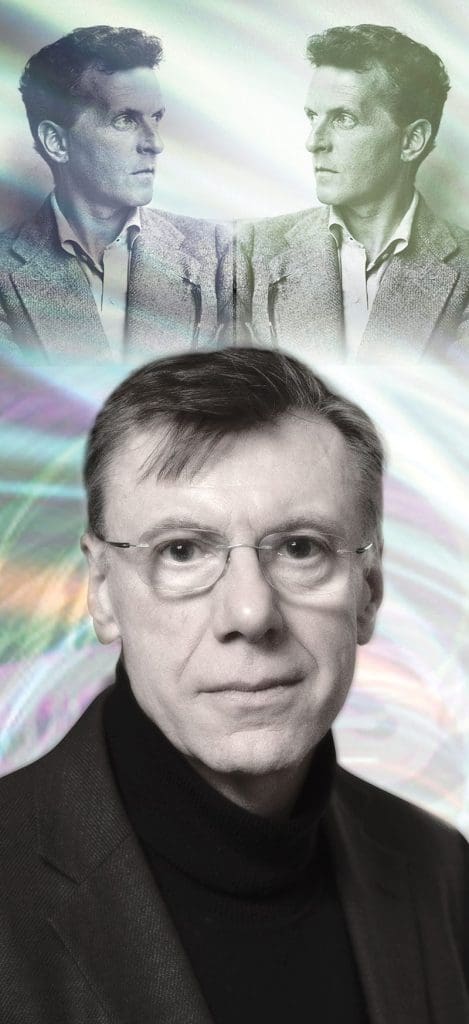
“If you’re a philosopher and you don’t provoke that kind of reaction, that’s the catastrophe. What you want is someone thinking enough about your work to ask a question that you would not be able to answer with a wave of the hand,” says epistemologist Michael Williams.
Williams, Krieger-Eisenhower Professor in the Department of Philosophy, says a great deal of the field hinges on clarity of expression, which is mostly worked out through writing down one’s thoughts—and rewriting, and rewriting again. Then, you present it to your colleagues, and their feedback—or pushback—is what makes it better. “People who have read the same things and thought about the same problems; this is my ‘lab.’ And sometimes the most productive conversation is with people who haven’t read what you’ve read,” he says.
Williams has spent much of his career considering “philosophical skepticism,” which essentially asks whether it’s possible for any knowledge to be certain. “It’s a sophisticated way of worrying about whether there is, in the end, a distinction between knowledge and opinion,” he explains. Over time, the nature of skepticism itself has changed. While the ancient skeptics claimed no question could ever be settled because it was possible to plausibly argue completely incompatible views, the rise of modern science in the 17th and 18th centuries disproved some of those views—think Newton’s contributions in physics and math.
Williams continues to spend his days wrestling with such dilemmas. In a recent analytic philosophy class, students discussed what numbers are (it turns out they don’t have to do with things, but with concepts about ways to distinguish one thing from another). He’s working on a book claiming that most people misinterpret a passage that 20th-century philosopher Ludwig Wittgenstein wrote about how productive an argument can be in the face of deep disagreement about the fundamentals of an issue—a question Williams believes resonates with our world today.
“We’re not always finding new things so much as making sense of the things we all know already,” Williams says. The question of free will offers a prime example: Ideas about it are embedded in how we think, hold people responsible for certain acts, punish, and forgive. Free will is familiar and ordinary, but it’s easy to become puzzled when trying to plumb the real basis of our thoughts about it.
“It’s often not easy even to clarify the question,” Williams says. “That’s the sort of thing we do for a living.”
Reconstructing a Long-Ago Library
At the start of the spring semester, Johns Hopkins welcomed a new kind of lab. On the second floor of Gilman looking out at the airy atrium, the Classics Research Lab is the first dedicated physical space for humanities undergraduates to join ongoing research projects, collaborate with faculty and peers, observe mentors in action, and find the kind of permanent intellectual home that science students have enjoyed for generations.
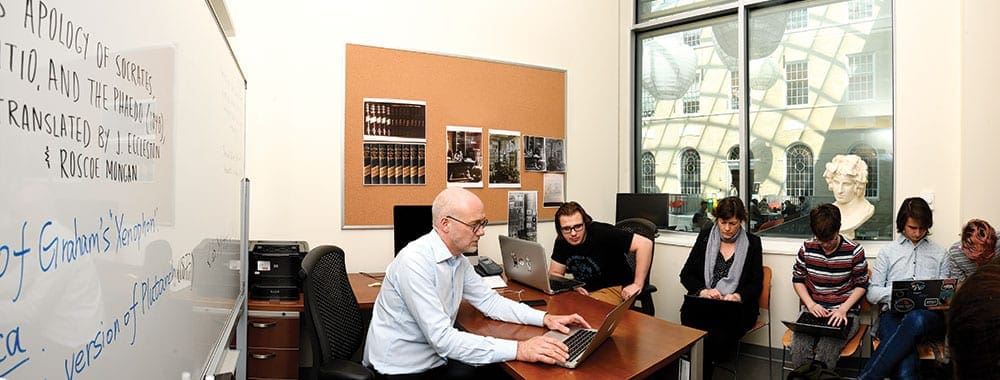
“We didn’t have space, in a literal and metaphorical sense, for undergrads to come together to do collaborative research on a project that would last longer than a single semester,” says Shane Butler, the lab’s founder, chair of the Department of Classics, and the Nancy H. and Robert E. Hall Professor in the Humanities. “We wanted to capture the way in which research done by humanities faculty is part and parcel of the undergraduate experience, because that really sets Hopkins apart.” Gabrielle Dean, the Sheridan Libraries’ William Kurrelmeyer Curator of Rare Books and Manuscripts, serves with Butler as co-director of the lab’s first research project.
A class of 10 students, with majors ranging from classics and English to public health and sociology, is tackling the lab’s first project. Together, the students are reconstructing the contents of the library of John Addington Symonds, a 19th-century British writer deeply influential in his time but largely forgotten today. Celebrated as a biographer, literary critic, and poet, Symonds was best-known as author of The Renaissance in Italy, but also produced studies of Dante, Shelley, Shakespeare, Michelangelo, and Walt Whitman. More quietly, Symonds wrote and secretly printed the first English-language study of ancient Greek sexuality, imported the word “homosexual” into English from German, where it had recently been coined on Greek and Latin roots, and was one of the first gay rights activists, even if he worked mostly behind the scenes. Through his writing about the classics, Symonds did no less than spearhead a leap forward for sexuality.
“Reconstructing his library gives us a picture of a certain kind of learning and culture in Victorian England and more generally in the 19th century,” says Butler. “What seemed at the time a dusty, scholarly experiment on his part turned out to be crucial to a major social movement of the last century: the one for gay rights. His study of classics was essential to his understanding of sexuality.”
Symonds’ myriad books were sold, taking with them clues about how he wielded such influence. But by mining the topics and authors behind his ideas, students should be able to back-map their way into his bookshelves, a process that is most efficiently tackled collaboratively, Butler says. And it’s that act of engaging with the incomplete that Butler most wants his students to experience.
“People ask why we study something that’s in pieces, but it’s precisely the ruin and fragment and thing that’s unknown that often speaks most urgently about where we are and how we feel about the world,” says Butler. “If you don’t have the imagination to think about things where you don’t know as much as you do know, you’re not going to get anywhere. Sometimes skills are honed best by looking at things it’s fundamentally impossible to put back together.”
The lab’s larger purpose of inviting students into an ongoing research project, adding their droplets to a living river of knowledge, is key for Butler. “I want to leave all students with the sense that you’re joining a project of thinking that’s ongoing and will go on for a very long time,” he says.
Related links:
https://krieger.jhu.edu/classics-lab/
https://symondsproject.org/
Accessing Latin Texts
You might think a field like classics wouldn’t offer much in the way of uncharted territory, but technology has opened surprising doors, says Shane Butler, chair of the Department of Classics.
While the Latin texts of the ancient world are widely known, Latin writing continued well into the 16th and 17th centuries, but has since remained mostly unread. Those texts are now available online—if you happen to read Latin. Butler teaches a graduate course where students who are Latin scholars are reading, editing, and translating those texts to make them accessible to all, and he’s eager to see what may be among them.
“There may be pieces of our intellectual history that were forgotten that underpin important and relevant concepts today or that help us to unthink assumptions made long ago that still impede our understanding of the world,” he says.

